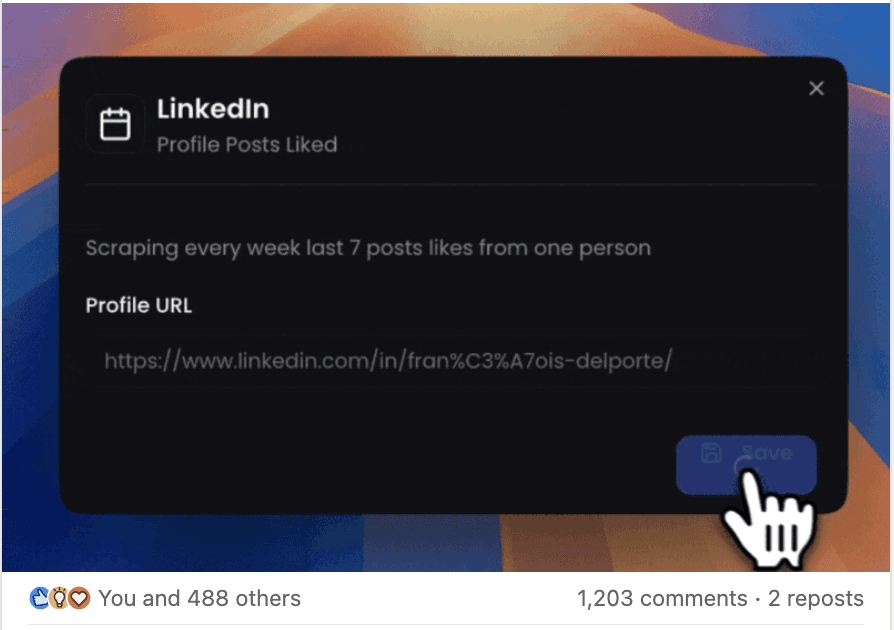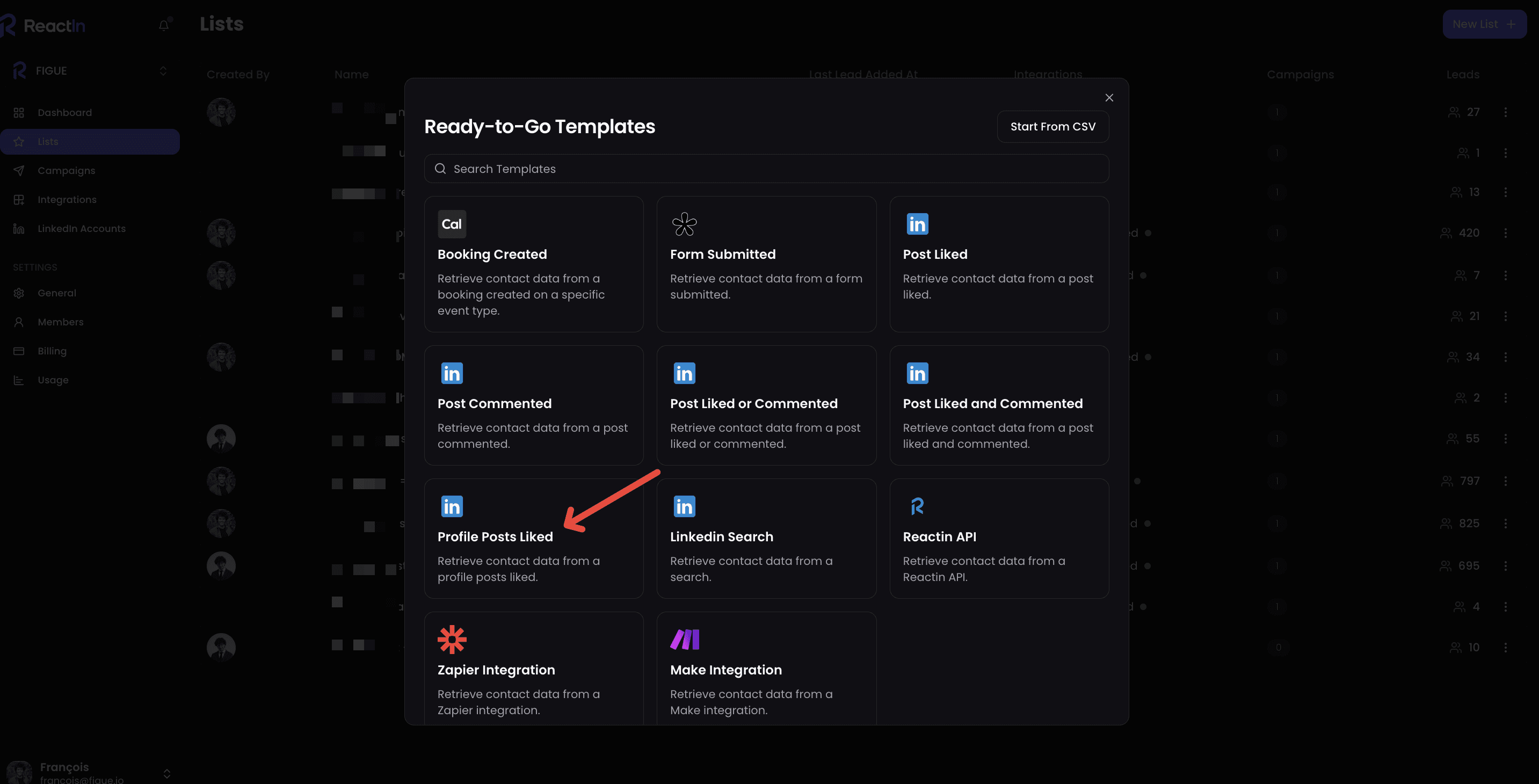What Are Some Examples of Powerful Opening Lines for LinkedIn Posts? A Guide to Maximum Engagement
Feb 12, 2025

TL;DR
Your LinkedIn opening line determines whether people will engage with your post or keep scrolling. A compelling opening line is concise, intriguing, and tailored to your audience. Whether it’s a bold statement, a thought-provoking question, or a compelling stat, crafting a strong first sentence is key. Leveraging LinkedIn for business networking can significantly enhance your professional connections and brand visibility. Learn how to refine your approach and use tools like ReactIn to maximize your LinkedIn success.
The Best LinkedIn Opening Lines to Capture Attention Instantly
The first line of your LinkedIn post is the most crucial. 🧐 If you don’t hook your audience immediately, they’ll scroll past without a second thought. With over 930 million users on LinkedIn, standing out in a crowded feed requires a compelling opening that sparks curiosity, emotion, or urgency.
A strong opening line can boost reader retention by up to 30%. (AuthoredUp)
Why Your LinkedIn Hook Matters
On average, LinkedIn users spend only 8 seconds deciding whether to read a post or move on. That means you have a tiny window to make an impression. Posts that start with a compelling hook can see 2-3x more engagement compared to those that don’t.
Creating great LinkedIn posts involves not just a strong opening line but also providing valuable insights that resonate with your audience.
A strong opening line sets the stage for engagement by:
Capturing attention quickly 🔥
Encouraging people to read more 📖
Driving comments and shares 💬

Crafting Compelling Hooks
Crafting a compelling hook is crucial for grabbing the attention of your LinkedIn audience. A hook is a captivating opening sentence or phrase that sets the tone for the rest of your post. It should be concise, intriguing, and tailored to your audience. A well-crafted hook can boost reader retention by up to 30% and increase engagement by 2-3 times compared to posts without a hook.
To craft a compelling hook, start by identifying your target audience and understanding what resonates with them. Use language that is clear, concise, and free of jargon. Make sure your hook is relevant to the content that follows and sets the tone for the rest of the post. Use active language and avoid passive voice. Finally, test different hook styles to see what works best for your audience.
Types of Effective LinkedIn Hooks
There are several types of effective LinkedIn hooks that can help you grab the attention of your audience. Here are some examples:
Question hooks: Starting with a question can be an effective way to engage your audience and encourage them to seek the answer. 👉 Example: “What’s the #1 mistake people make when growing their LinkedIn network?”
Statistic hooks: Using a surprising statistic can be a great way to grab attention and highlight the significance of your content. 👉 Example: “Did you know 79% of LinkedIn users don’t engage with posts—yet they still read them?”
Anecdotal hooks: Sharing a personal story or anecdote can help humanize your content and connect with your audience on an emotional level. 👉 Example: “Last year, I almost gave up on LinkedIn. Then, one simple tweak changed everything…”
Quotation hooks: Starting with a relevant quote can add depth and context to your post and lend authority to your content. 👉 Example: “As Steve Jobs once said, ‘Innovation distinguishes between a leader and a follower.’”
Provocative hooks: Using a bold or controversial statement can spark interest and debate, but be careful not to alienate your audience. 👉 Example: “Cold outreach is dead. Here’s why personalized engagement is the only way forward.”
Humorous hooks: Injecting humor into your hook can be an effective way to lighten the mood and draw in your audience. 👉 Example: “Why did the marketer bring a ladder to work? To reach the high-hanging fruit on LinkedIn!”
Best Practices for Writing LinkedIn Hooks
Here are some best practices for writing effective LinkedIn hooks:
Keep it concise: Your hook should be short and to the point. Aim for a maximum of 2-3 sentences.
Make it relevant: Your hook should be relevant to the content that follows and set the tone for the rest of the post.
Use active language: Use active language and avoid passive voice to make your hook more engaging.
Test different styles: Test different hook styles to see what works best for your audience.
Use humor and emotion: Use humor and emotion to connect with your audience and make your hook more memorable.
5 LinkedIn Hook Strategies
Ask a Thought-Provoking Question
People love sharing their opinions. Starting with a question encourages discussion and boosts engagement.
👉 Example: “What’s the #1 mistake people make when growing their LinkedIn network?”
Share a Surprising Statistic
A powerful data point can instantly make people stop scrolling.
👉 Example: “Did you know 79% of LinkedIn users don’t engage with posts—yet they still read them?” (Source
Make a Bold Statement
Controversial or contrarian takes can spark interest and debate.
👉 Example: “Cold outreach is dead. Here’s why personalized engagement is the only way forward.”
Use Storytelling to Create an Emotional Connection
People connect with stories more than facts. Start with a relatable personal experience.
👉 Example: “Last year, I almost gave up on LinkedIn. Then, one simple tweak changed everything…”
Leverage the Curiosity Gap
Create intrigue by hinting at something valuable without revealing it upfront.
👉 Example: “I doubled my LinkedIn engagement in 30 days using this one unexpected technique…”
Incorporating bold statements into your LinkedIn strategy can provoke curiosity and drive higher engagement.
Industry Insights and Trends
Staying up-to-date with industry insights and trends is crucial for creating effective LinkedIn hooks. Here are some ways to stay informed:
Follow industry leaders: Follow industry leaders and influencers on LinkedIn to stay informed about the latest trends and insights.
Read industry publications: Read industry publications and blogs to stay up-to-date with the latest news and trends.
Attend industry events: Attend industry events and conferences to network with other professionals and stay informed about the latest trends and insights.
Use LinkedIn’s publishing platform: Use LinkedIn’s publishing platform to share your own insights and expertise and stay informed about the latest trends and insights in your industry.
By following these best practices and staying informed about industry insights and trends, you can create effective LinkedIn hooks that grab the attention of your audience and drive engagement.
How to Test and Optimize Your LinkedIn Hooks
Not every hook works for every audience. A/B testing different opening lines can help you identify what resonates most. Maintaining an active LinkedIn presence is crucial for testing different hooks and understanding what resonates with your audience. Here’s how:
Post variations of the same content with different hooks.
Track engagement rates using LinkedIn analytics.
Refine your approach based on data.
Your opening line is everything. LinkedIn truncates long posts, so your first sentence needs to spark curiosity and make people click 'See more.' (DeliveredSocial)
Turn Engagement into Connections with ReactIn
A great opening line gets people to read your LinkedIn posts—but how do you turn that engagement into leads? That’s where ReactIn comes in.
With ReactIn, you can:
Identify and engage with users who interact with your content.
Automate personalized outreach to potential leads.
Convert LinkedIn engagement into meaningful business relationships.
📌 Pro Tip: Use ReactIn’s lead enrichment feature to tailor your follow-ups based on audience interactions.

Conclusion: Master Your LinkedIn Hooks and Convert Engagement into Growth
Your LinkedIn success starts with a powerful opening line, but it doesn’t stop there. To maximize your impact, combine great hooks with smart audience engagement and automation tools like ReactIn.
🔥 Ready to see the difference? Explore ReactIn and discover how it can revolutionize your approach.
Sign up for ReactIn for free and without a credit card to start optimizing your campaigns today.
Théo R.
FAQ
1. What type of LinkedIn hooks work best for engagement?
The most effective hooks include thought-provoking questions, surprising stats, bold statements, compelling stories, and curiosity-driven openers. The key is to spark interest and encourage conversation.
2. How long should a LinkedIn opening line be?
Short and snappy is best—ideally under 15 words. Your goal is to grab attention without overwhelming your audience.
3. How can I measure the effectiveness of my LinkedIn hooks?
Use LinkedIn analytics to track metrics like impressions, engagement rates, and comments. Testing different hook styles over time will help you determine what resonates best with your audience.



